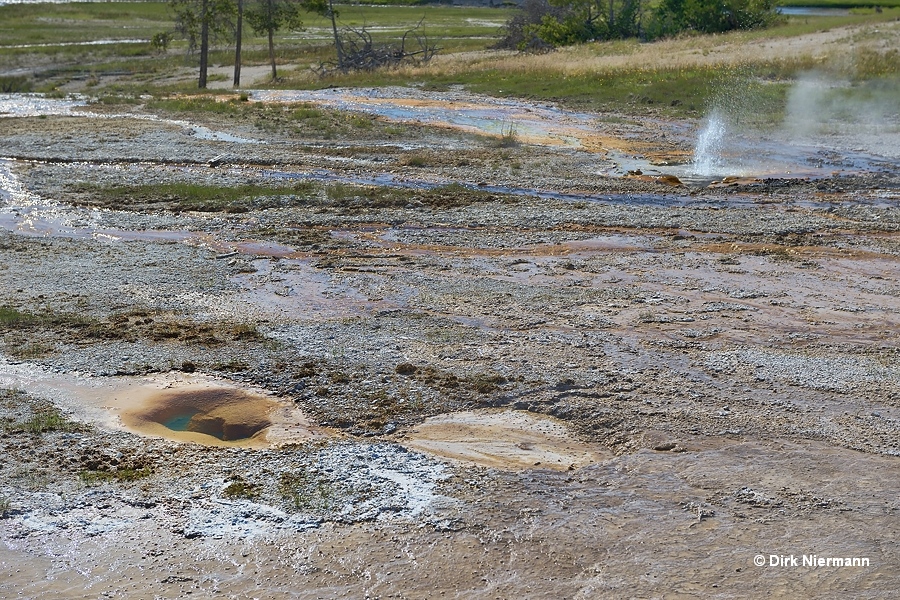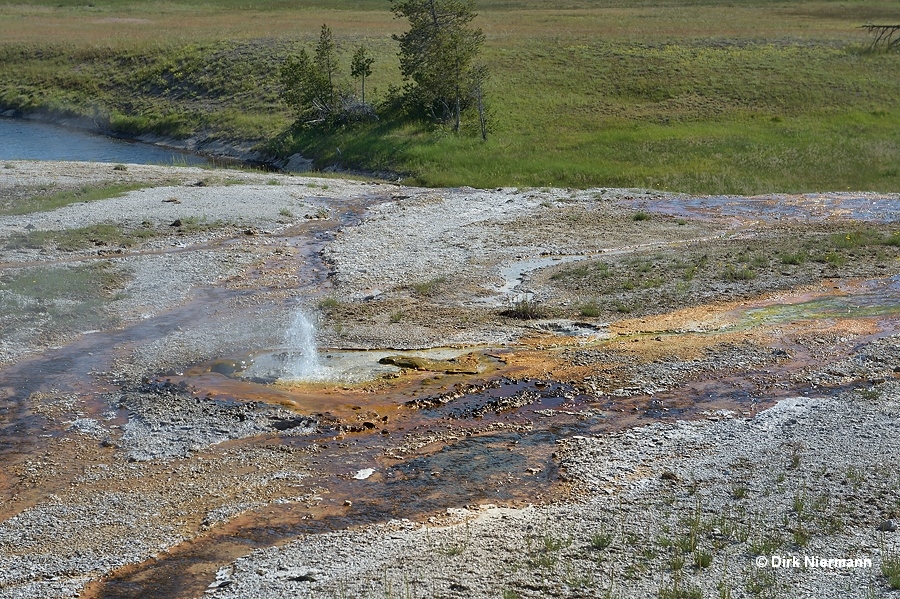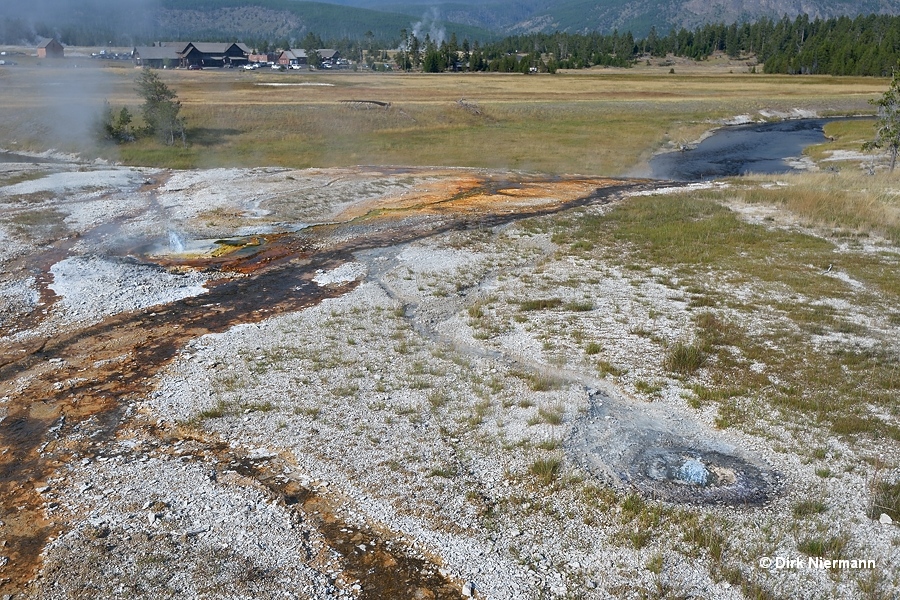Geyser Hill Group - page 3
The Lion Geyser Complex occupies a large sinter mound in the northwest of Geyser Hill, where a trail branches off to the Sawmill Group. Northernmost feature is North Goggles Geyser, a rare performer and if active, most likely showing minor eruptions up to 3 m (10 feet) high. The extremely rare major eruptions may reach up to 15 m (50 feet) height.
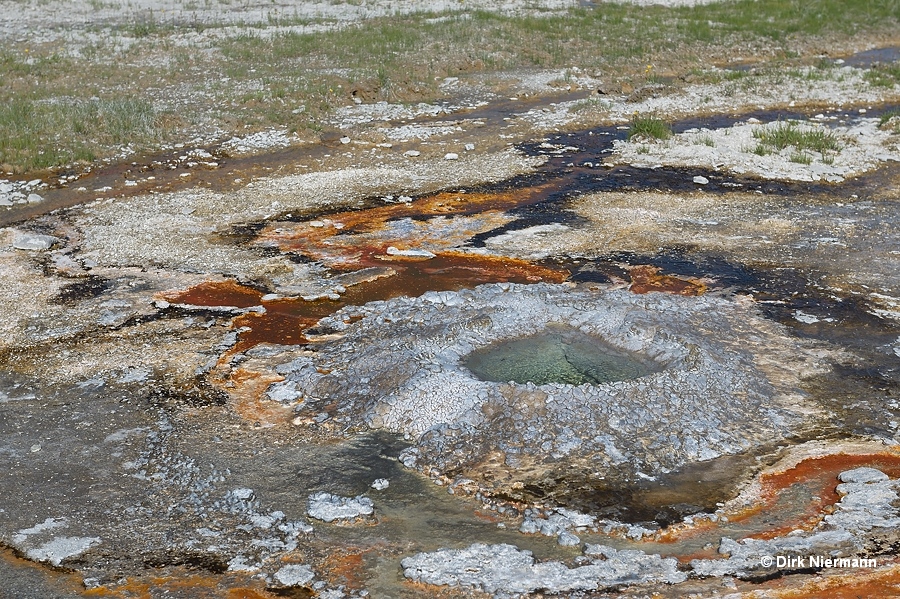
Goggles Spring, a few feet southwest, is dormant since 2002. The sign in front of the feature shows the name "Goggle Spring", which seems to be in use, too. The same is true for "North Goggle Geyser".
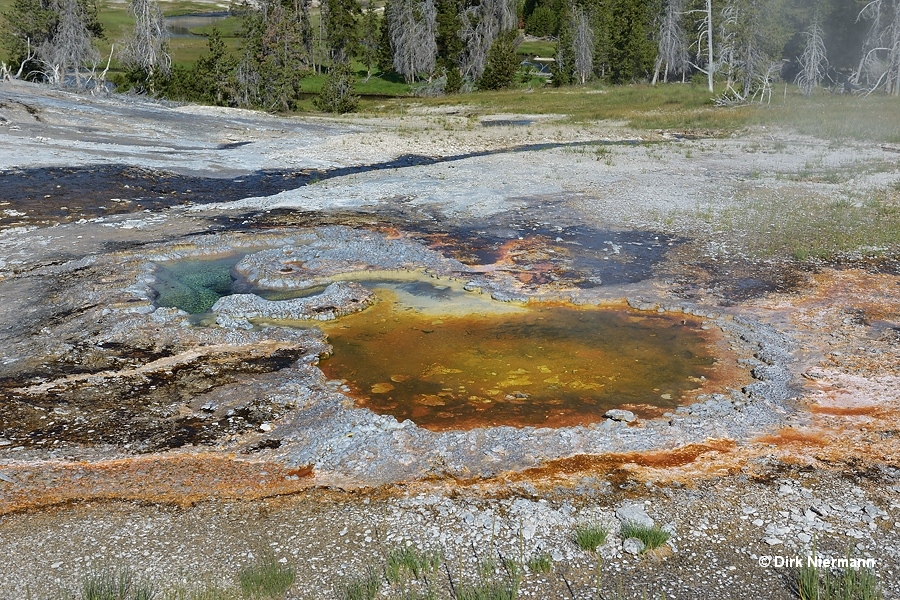
Central cones of the Lion Complex are (from south to north, in the photo from left to right) Little Cub Geyser, Lioness Geyser, Big Cub Geyser and Lion Geyser.
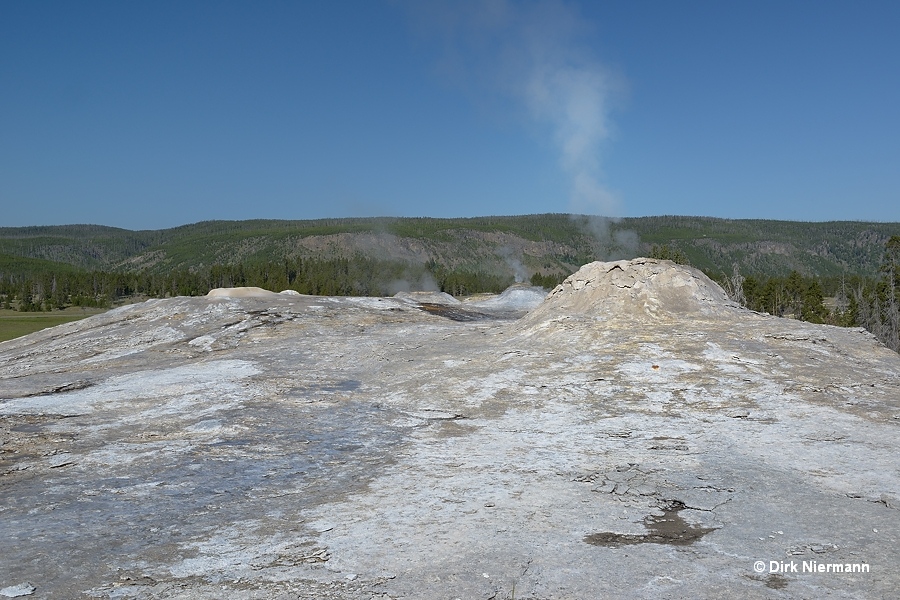
Lion Geyser owns the largest cone and generates also the tallest eruptions of the complex, up to 20 m (70 feet) height. As a cyclic geyser its play is consisting usually of one to four bursts of decreasing height in one series at an interval of approximately 1.5 hours. The interval between series (cycle interval) is increasing with the number of eruptions in the former series and varies between 6 and 50 hours. The name "lion" refers to the roaring sound that sometimes goes along with steam emissions during its quiet intervals. Then, of course, they aren't quiet any longer. Many visitors may remember Lion as "a geyser they saw going off from a distance". This is due to the fact that its tall eruptions are widely visible all over Geyser Hill and the Old Faithful area through to Castle Group. On the other hand, only few people wait next to Lion Geyser for the eruption because its variable intervals are not predicted by the National Park Service.
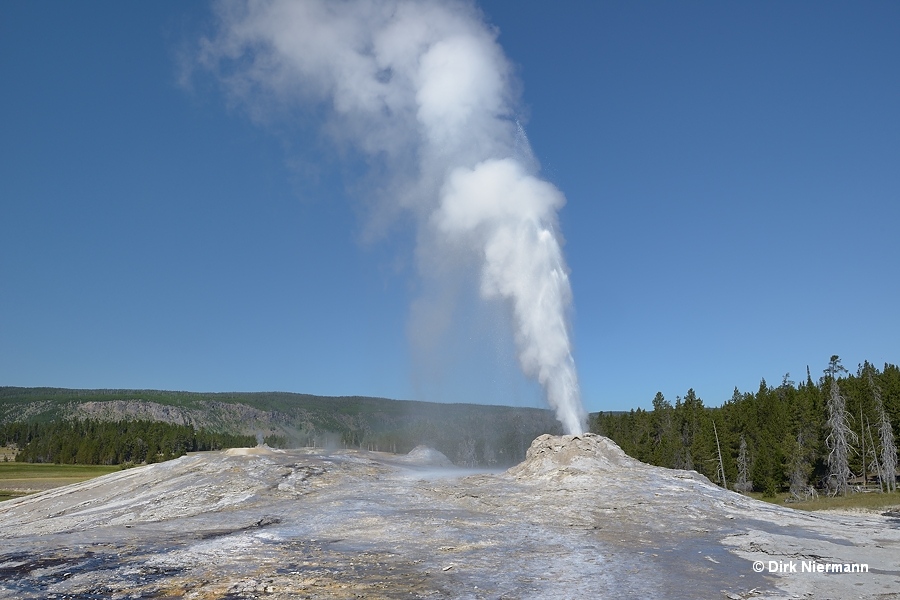
Eruptions of Little Cub Geyser are far less tall, only up to 3 m (10 feet). Prior to 2004 Little Cub Geyser exhibited quite regular intervals of 50 - 90 minutes, but thereafter it often switched to an irregular behaviour.
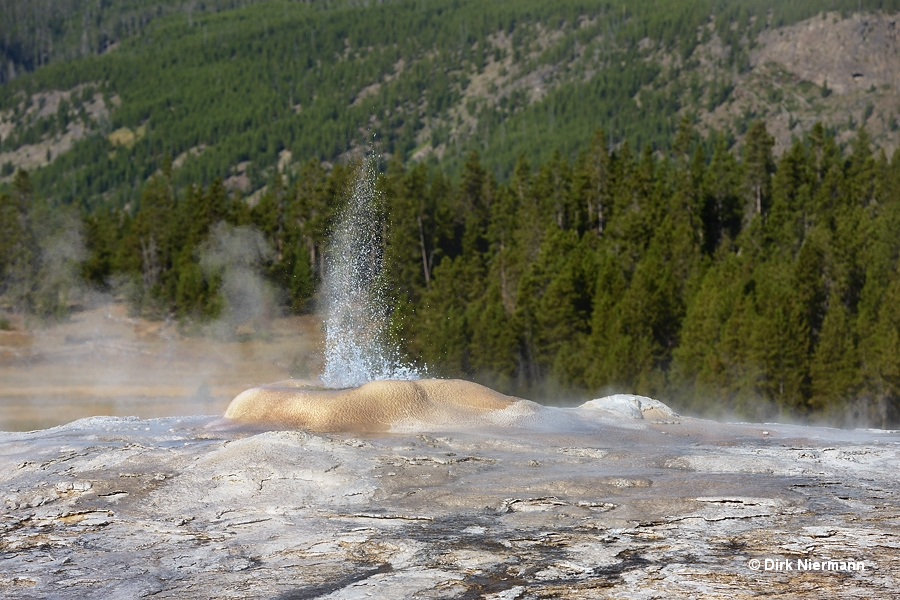
While Lion Geyser and Little Cub Geyser are frequently active, Lioness Geyser and Big Cub Geyser have been dormant for decades. Both were no small geysers. Lioness played up to 15 m (50 feet), and Big Cub reached up to 12 m (40 feet) height.
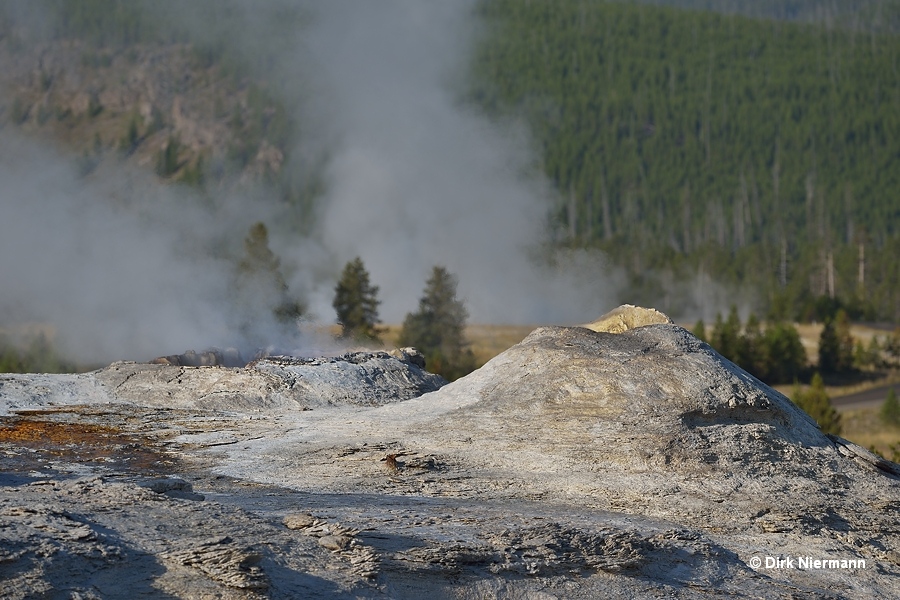
The quiet Heart Spring in front of the Lion Complex provides an exceptionally beautiful photo motif.
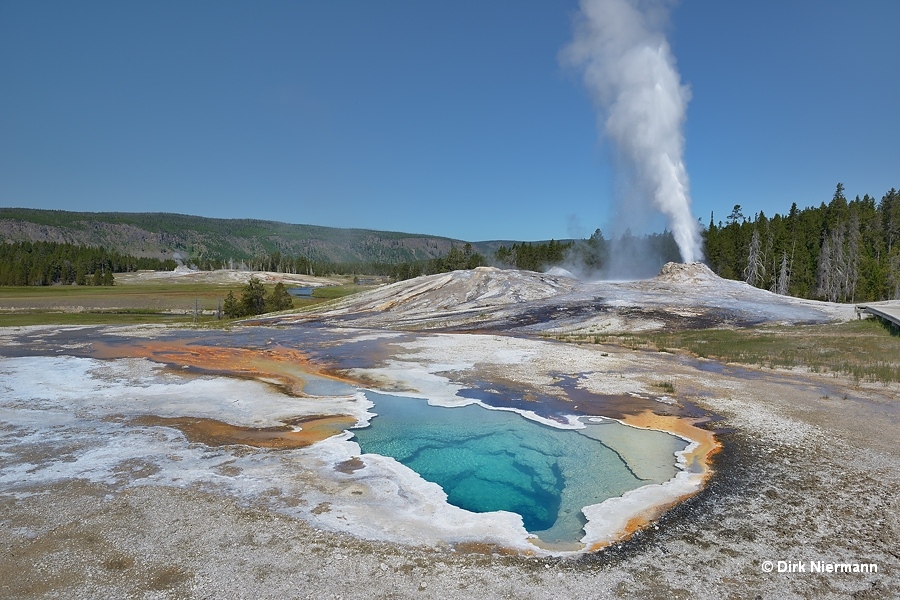
According to T. Scott Bryan the original Pot O Gold, which was a geyser in the 1980s, has disappeared. Nowadays often a different little spring, which is located nearly at the same spot and whose appearance matches the name, is designated as Pot O Gold informally.
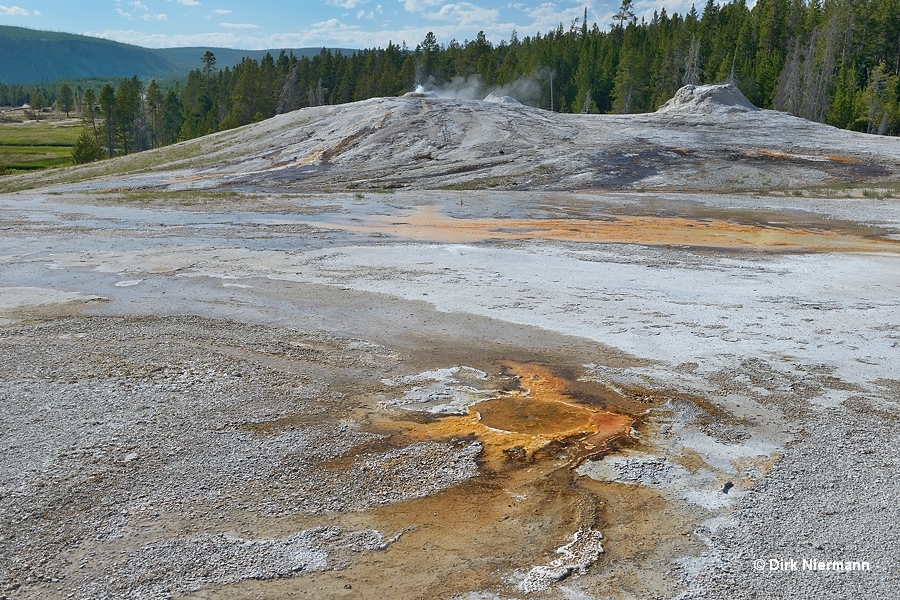
Across the boardwalk from the Lion Complex some small springs are to be seen, one of them is a little geyser. Kitten Geyser lies a short distance upslope and acts mainly as an intermittent spring. But true, very small eruptions are also known.
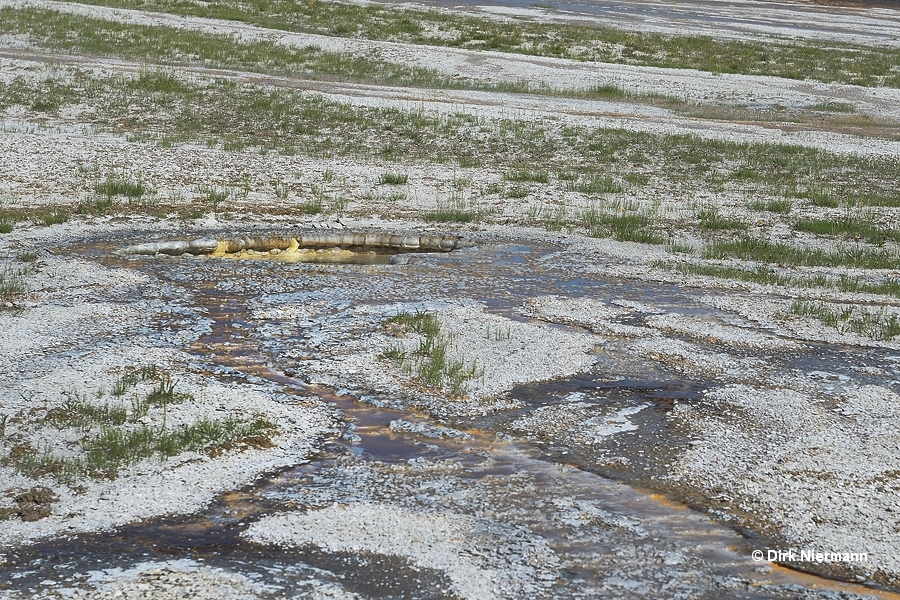
Some unnamed springs closer to the boardwalk are probably the first sight if you look for Kitten Geyser.
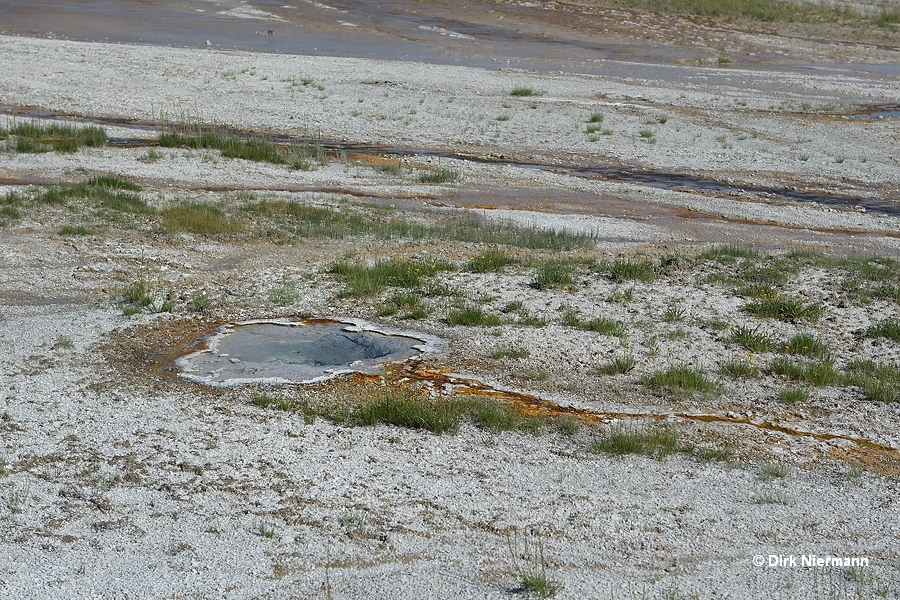
Down the trail you come across Marmot Cave Geyser. In fact, the cave above the geysers pool was home of a marmot before geyser activity emerged. Eruptions of Marmot Cave Geyser are rare and remain small.
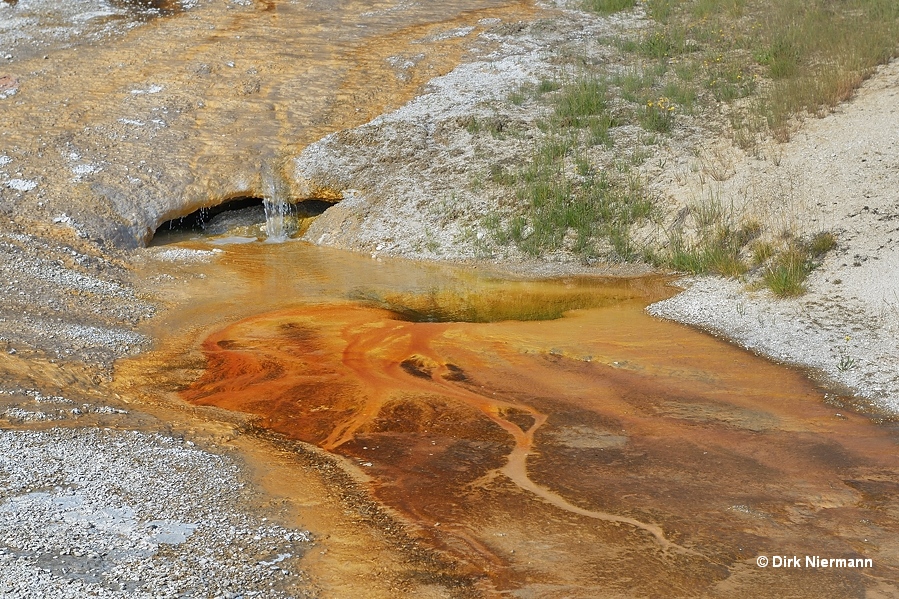
In July 2024 Marmot Cave Geyser was in an active phase with eruptions every 15 - 20 minutes. The duration was very short, in the range of 40 seconds or so. One of the factors that may have made a major contribution to Marmot Cave's activity was that cold inflow from springs above no longer found its way into the geyser's pool.
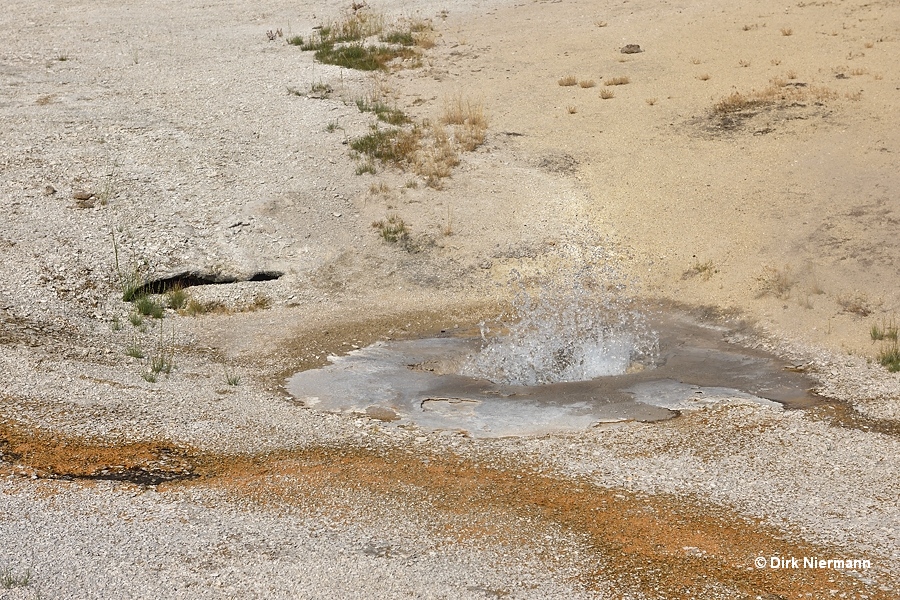
Across from Marmot Cave Geyser Arrowhead Spring occupies a large sinter mound. Arrowhead Spring acts as an intermittent spring, but does not erupt.
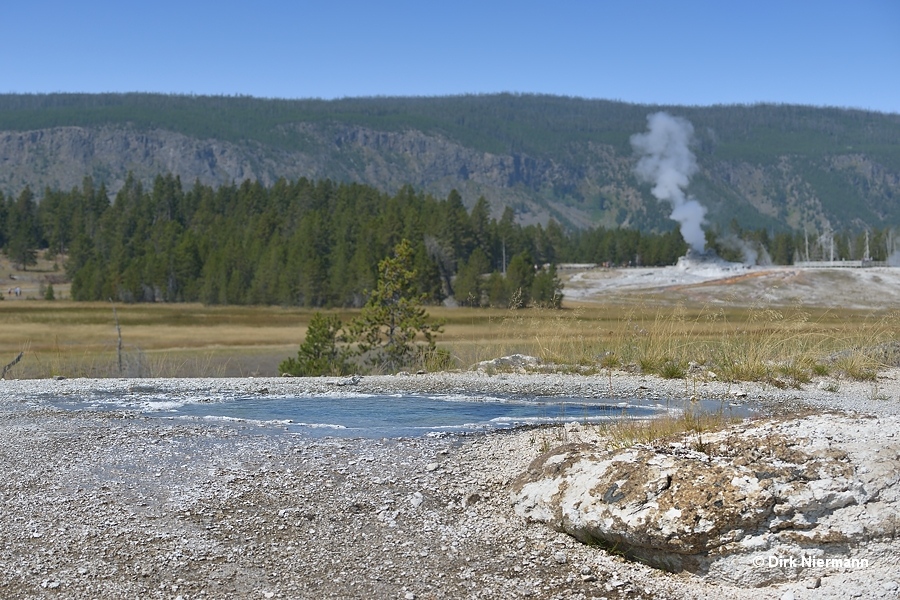
The small area south of Arrowhead is peppered with active and dormant geysers. Due to their small sizes they are collectively called "The Dwarfs". Some of them are also carrying informal names of their own, such as Red Dwarf Geyser or North Dwarf Geyser. However, the area is constantly changing and so the identification of single features is challenging.
